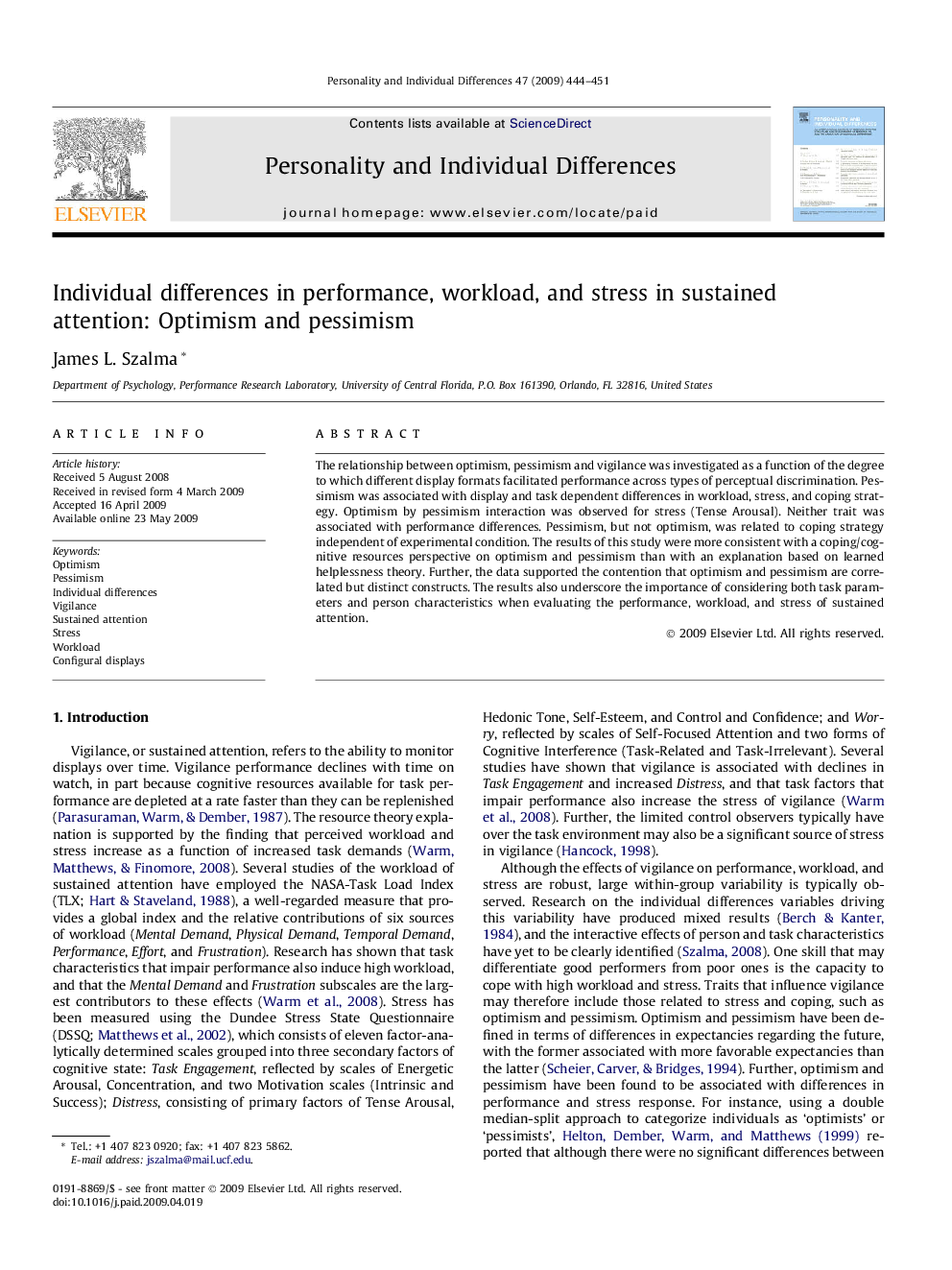| Article ID | Journal | Published Year | Pages | File Type |
|---|---|---|---|---|
| 892072 | Personality and Individual Differences | 2009 | 8 Pages |
Abstract
Abstract
The relationship between optimism, pessimism and vigilance was investigated as a function of the degree to which different display formats facilitated performance across types of perceptual discrimination. Pessimism was associated with display and task dependent differences in workload, stress, and coping strategy. Optimism by pessimism interaction was observed for stress (Tense Arousal). Neither trait was associated with performance differences. Pessimism, but not optimism, was related to coping strategy independent of experimental condition. The results of this study were more consistent with a coping/cognitive resources perspective on optimism and pessimism than with an explanation based on learned helplessness theory. Further, the data supported the contention that optimism and pessimism are correlated but distinct constructs. The results also underscore the importance of considering both task parameters and person characteristics when evaluating the performance, workload, and stress of sustained attention.
Related Topics
Life Sciences
Neuroscience
Behavioral Neuroscience
Authors
James L. Szalma,
